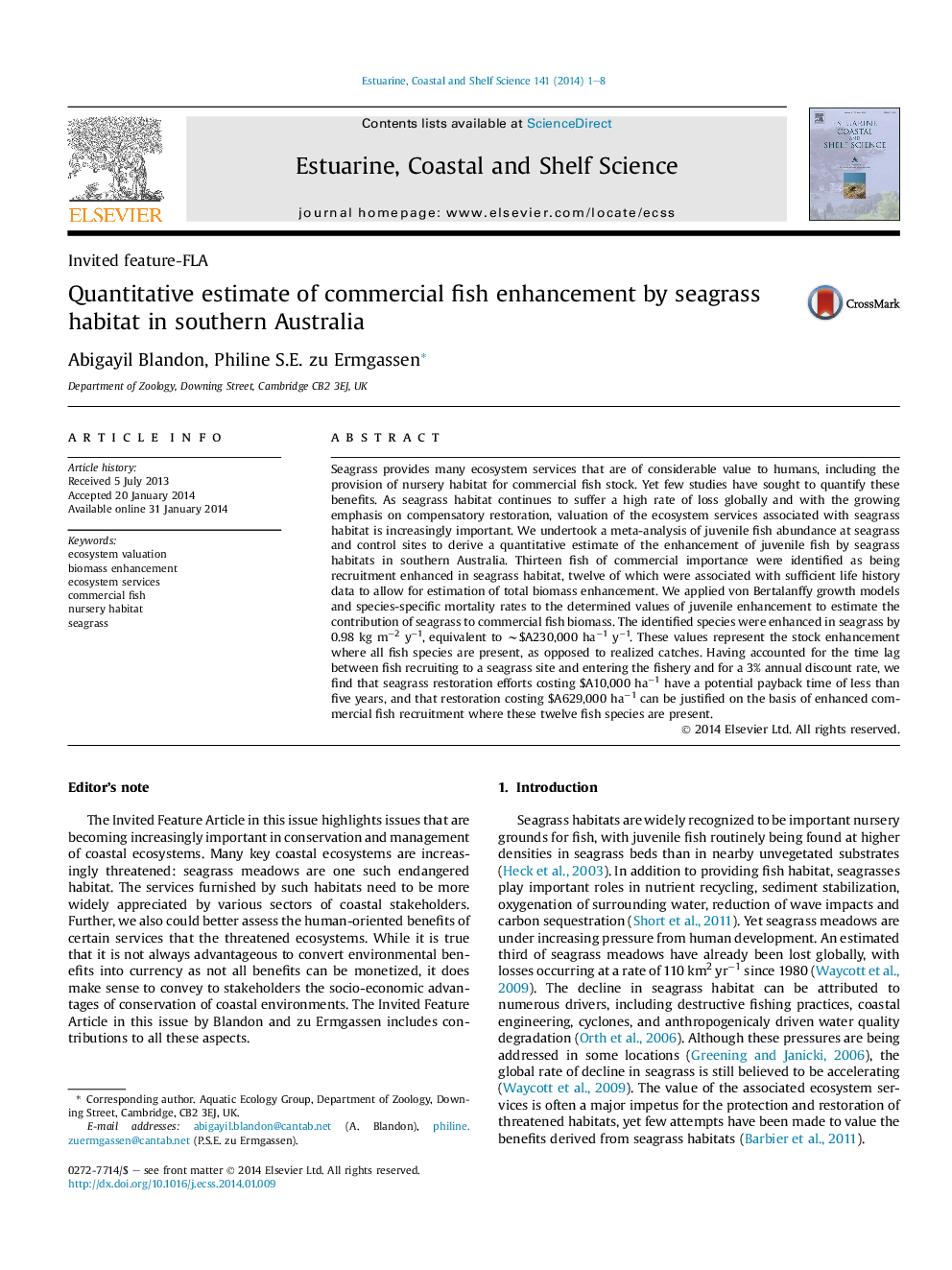| Article ID | Journal | Published Year | Pages | File Type |
|---|---|---|---|---|
| 4539700 | Estuarine, Coastal and Shelf Science | 2014 | 8 Pages |
Seagrass provides many ecosystem services that are of considerable value to humans, including the provision of nursery habitat for commercial fish stock. Yet few studies have sought to quantify these benefits. As seagrass habitat continues to suffer a high rate of loss globally and with the growing emphasis on compensatory restoration, valuation of the ecosystem services associated with seagrass habitat is increasingly important. We undertook a meta-analysis of juvenile fish abundance at seagrass and control sites to derive a quantitative estimate of the enhancement of juvenile fish by seagrass habitats in southern Australia. Thirteen fish of commercial importance were identified as being recruitment enhanced in seagrass habitat, twelve of which were associated with sufficient life history data to allow for estimation of total biomass enhancement. We applied von Bertalanffy growth models and species-specific mortality rates to the determined values of juvenile enhancement to estimate the contribution of seagrass to commercial fish biomass. The identified species were enhanced in seagrass by 0.98 kg m−2 y−1, equivalent to ∼$A230,000 ha−1 y−1. These values represent the stock enhancement where all fish species are present, as opposed to realized catches. Having accounted for the time lag between fish recruiting to a seagrass site and entering the fishery and for a 3% annual discount rate, we find that seagrass restoration efforts costing $A10,000 ha−1 have a potential payback time of less than five years, and that restoration costing $A629,000 ha−1 can be justified on the basis of enhanced commercial fish recruitment where these twelve fish species are present.
